
Everyday Violence (installation view), 2022
Dimensions variable, approximately 18” x 16”
MDF, silicone, assorted broken glass, key, plaster, wood glue
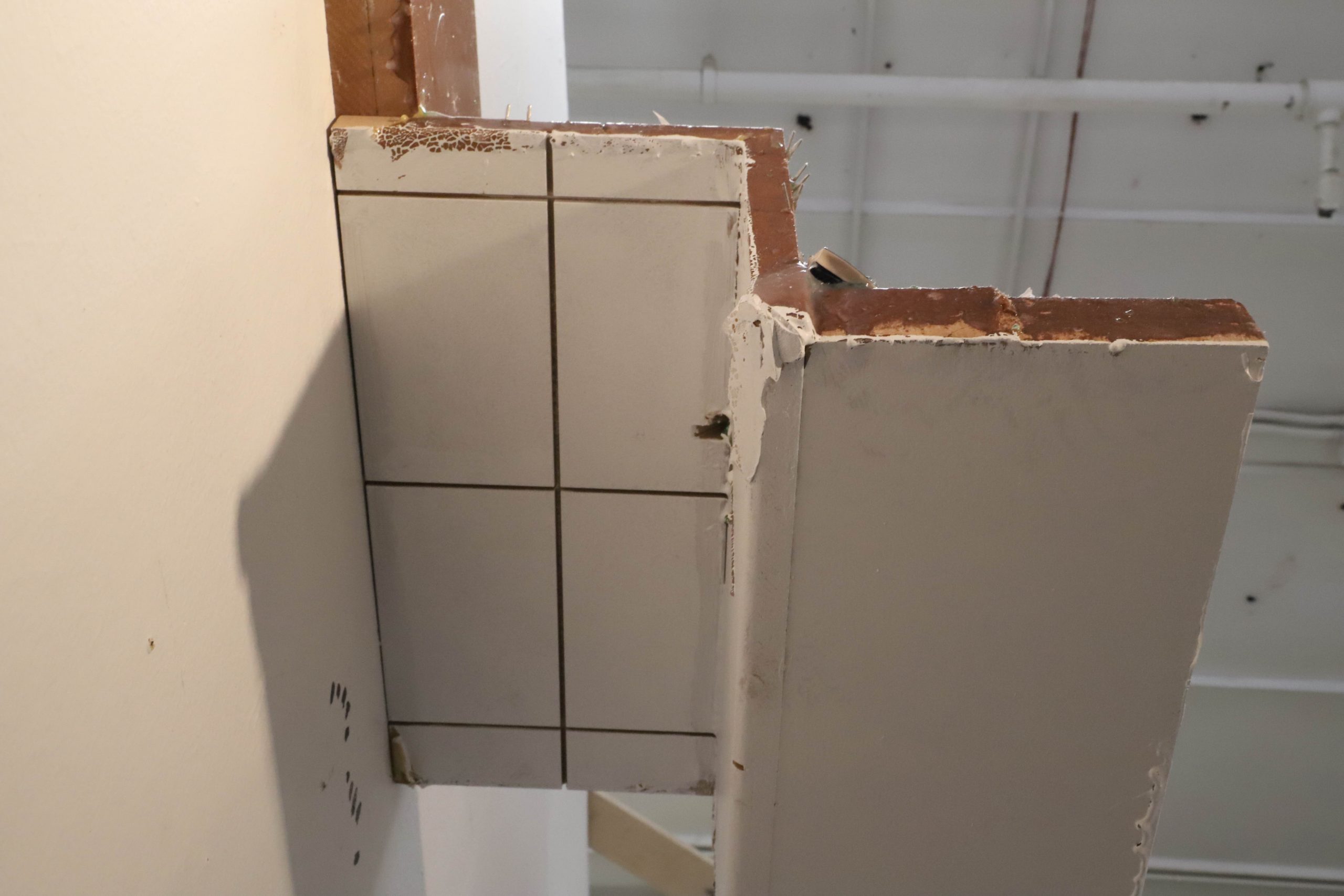
Everyday Violence (installation view), 2022
Dimensions variable, approximately 18” x 16”
MDF, silicone, assorted broken glass, key, plaster, wood glue
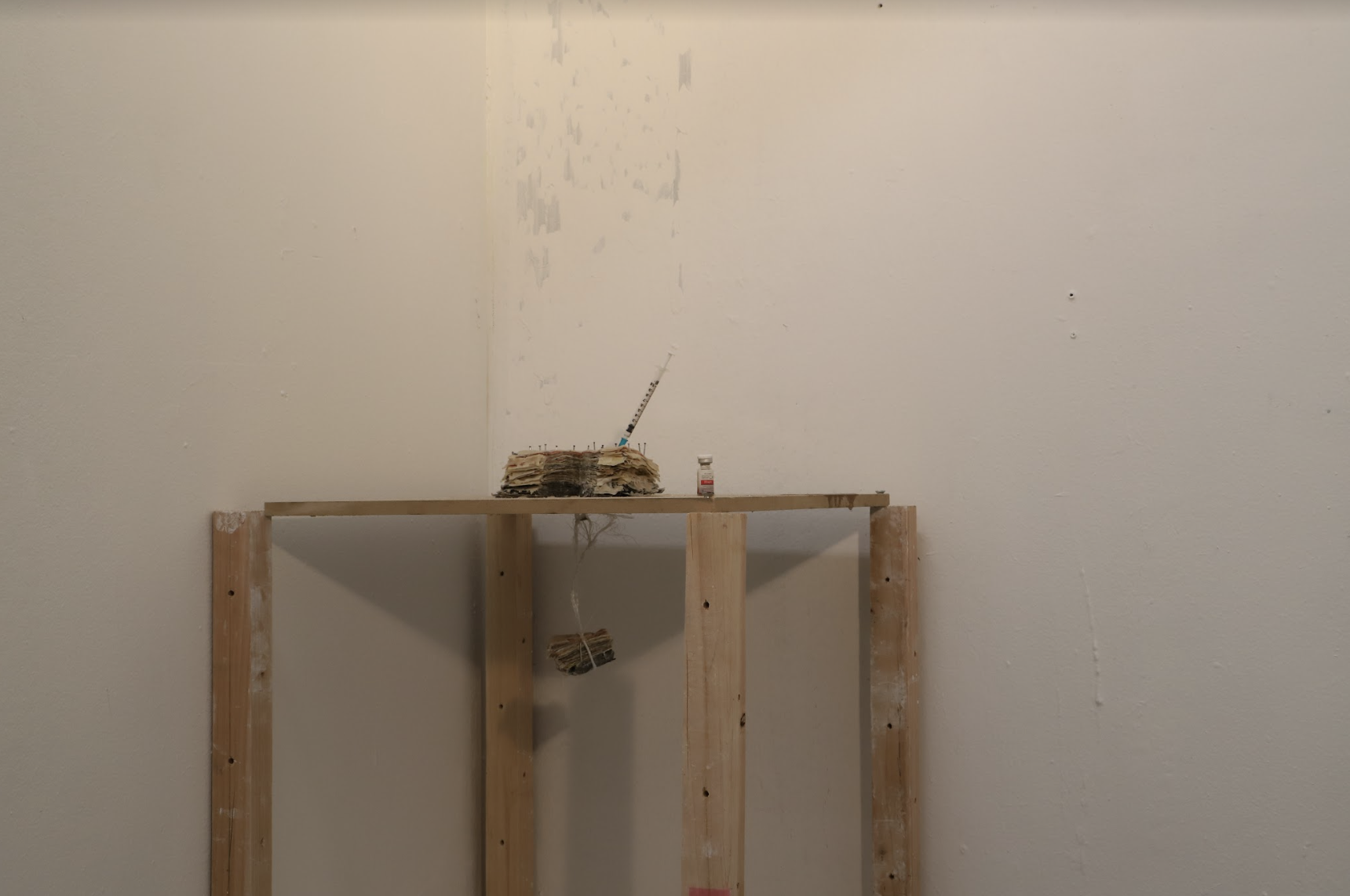
Transience (installation view), 2019-2022
Dimensions variable, approximately 19”x 19”x 24”
Wood, silicone, mylar, tracing paper, print on transparent surface, testosterone vial, Tuberculin syringe, menstrual blood, beeswax, oil paint
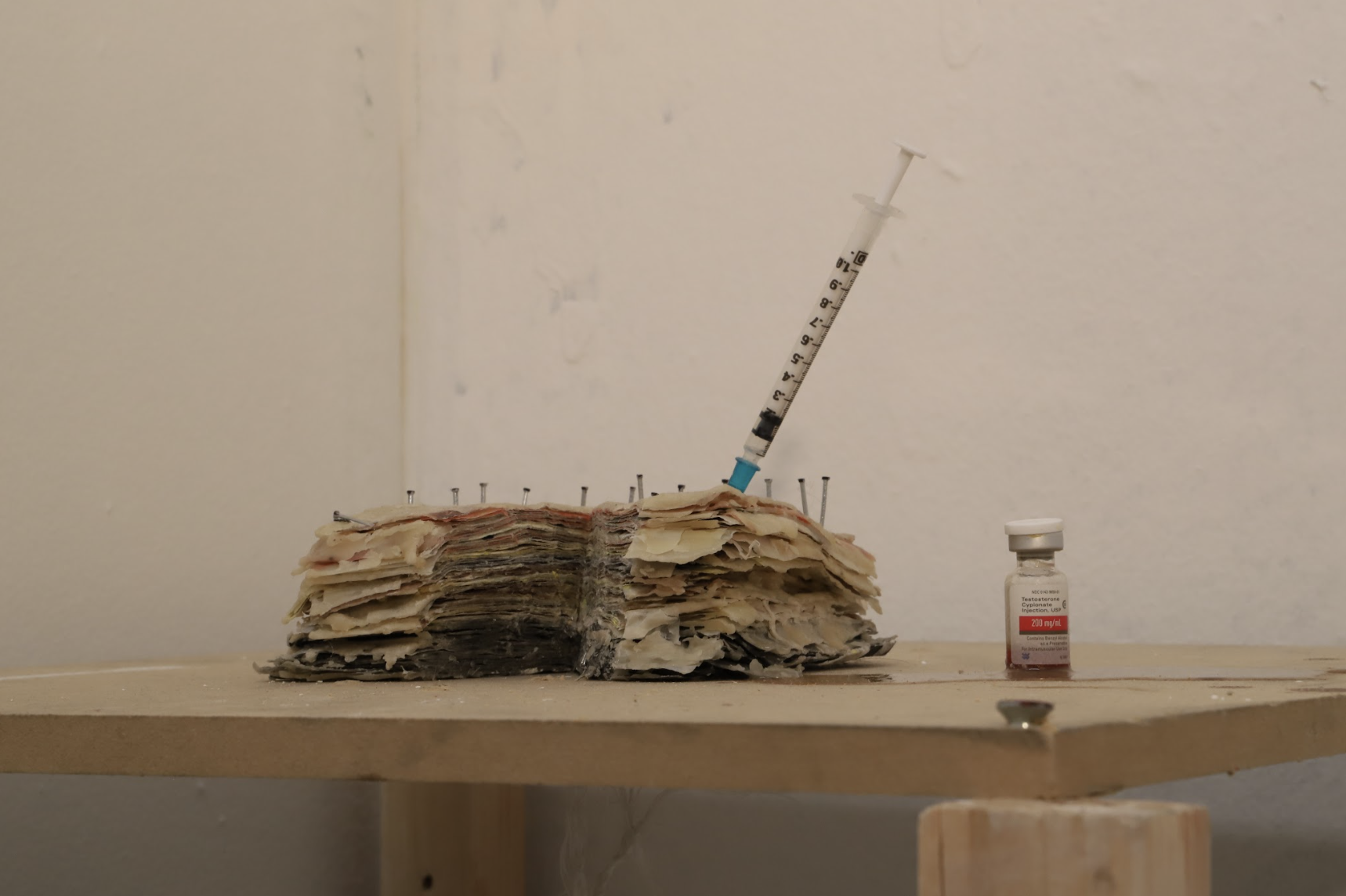
Transience (installation view), 2019-2022
Dimensions variable, approximately 19”x 19”x 24”
Wood, silicone, mylar, tracing paper, print on transparent surface, testosterone vial, Tuberculin syringe, menstrual blood, beeswax, oil paint
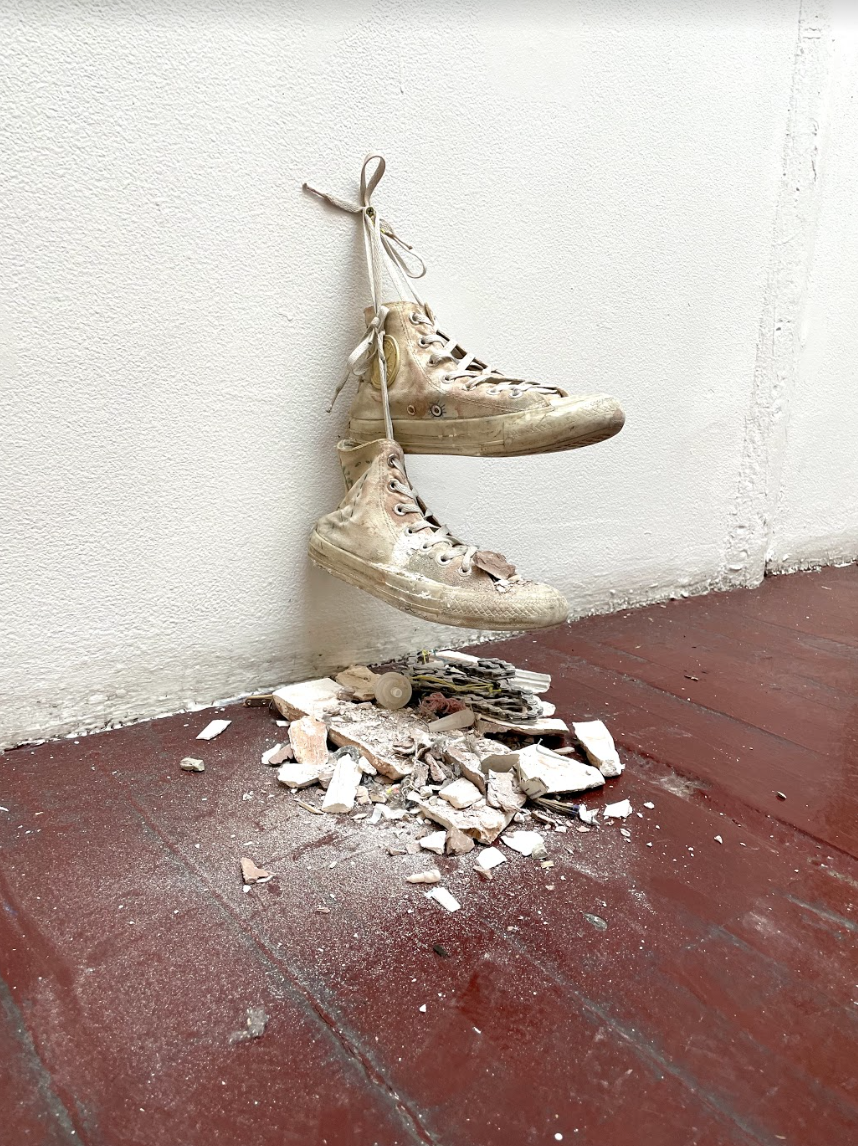
My favorite shoes (Installation view) , 2016-2022
Dimensions variable, approximately 8”x16”
Old Converse, plaster, dust, bike chain, clay, washers, string

Clogged (installation view), 2022
24”x19”
Marble sink (found), Tuberculin syringes, silicone, bottle cap, Testosterone vials
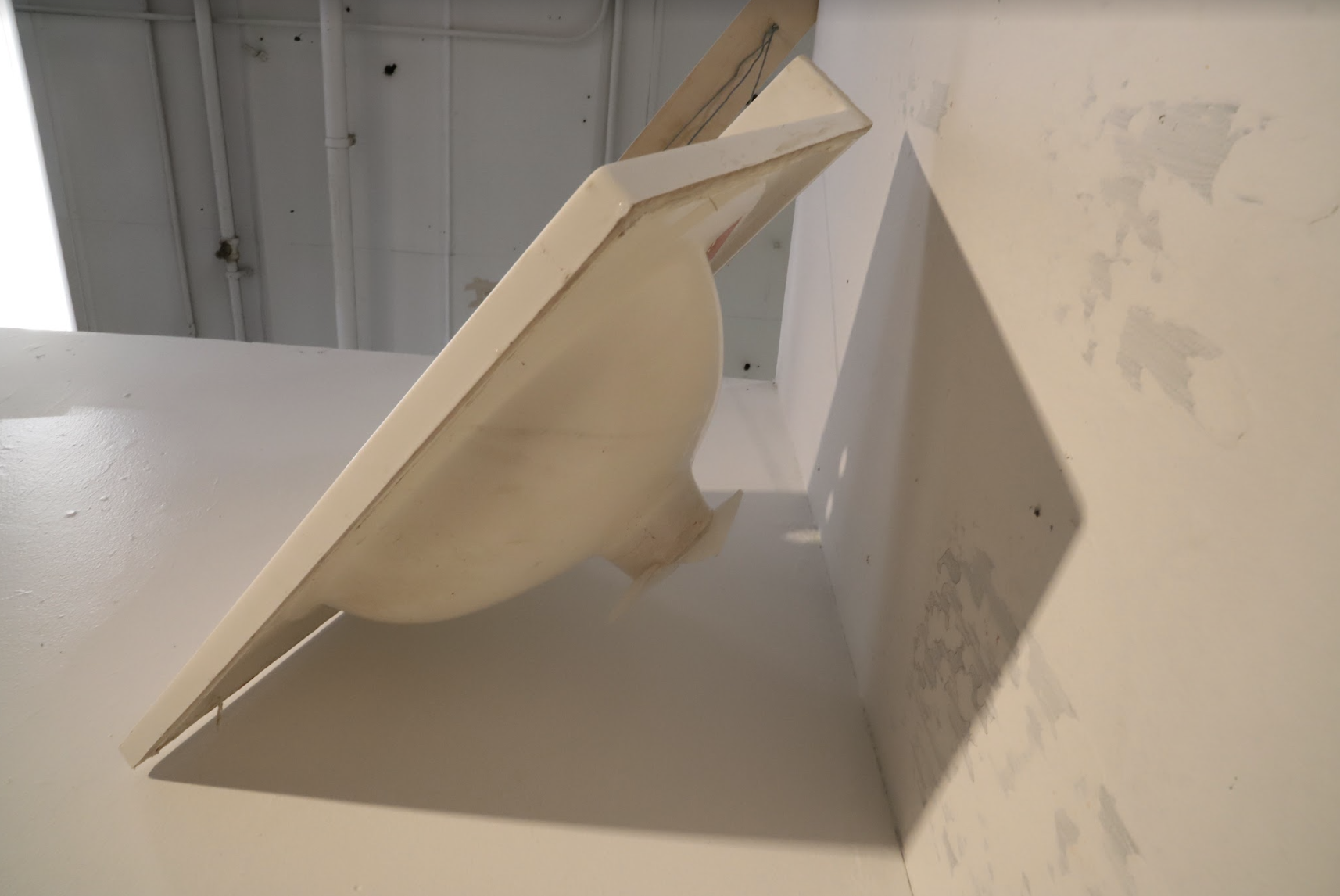
Clogged (installation view), 2022
24”x19”
Marble sink (found), Tuberculin syringes, silicone, bottle cap, Testosterone vials
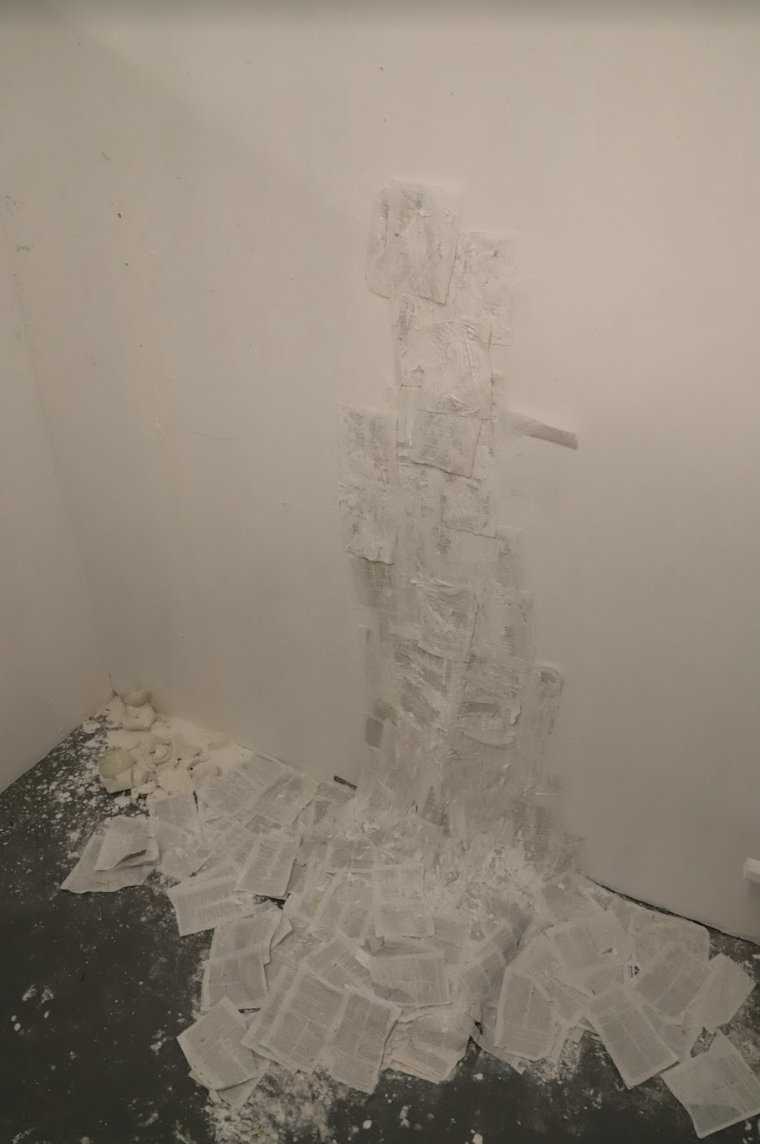
Untitled (Installation view), 2022
Dimensions variable
Bible pages, plaster wood beam
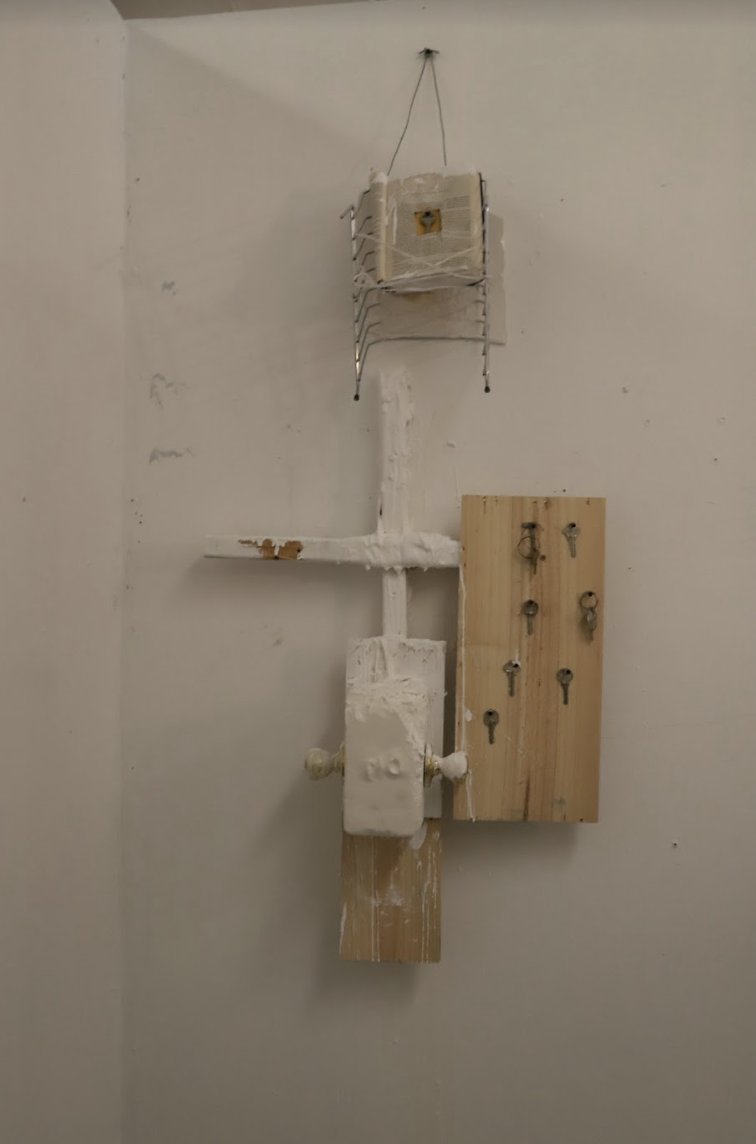
Willfull ignorance (Installation view), 2022
Dimensions variable, approximately 30”x24”
Wood, Plaster, Bible, wood glue, dish rack (found), keys (found), thumb tacks, nail polish, locking door knob mechanism
Artist Statement
I am interested in making work that deteriorates, degrades, can be recycled into new work, and is therefore never fixed. The contexts of objects I collect from the street inform my work. In an act of foraging, object such as keys, sinks and handcuffs are made mine under the agreement of “finders’ keepers”. Though I am allowed to take trash conscious free, I remain consistently aware that the city streets are not a neutral place. My practice operates much like the act of trying to build stability out of what you have. I work with the material to see what sticks, how I can balance things on one another, use tension, temporality and be at home with dripping and drying. Material brutalism is what I describe as my relationship to typical sculptural materials: plaster, silicone, wood. I tend to treat them poorly by enacting things such as allowing my works to become dirty, breaking pieces of them intentionally and covering pieces in glue without allowing it to completely dry before continuing to work. Between my identity and my relationship to materials, there is a point of intersection at the idea of transience. Here I consider the fact that everything is always changing, and I am learning to allow myself and my work the same grace.